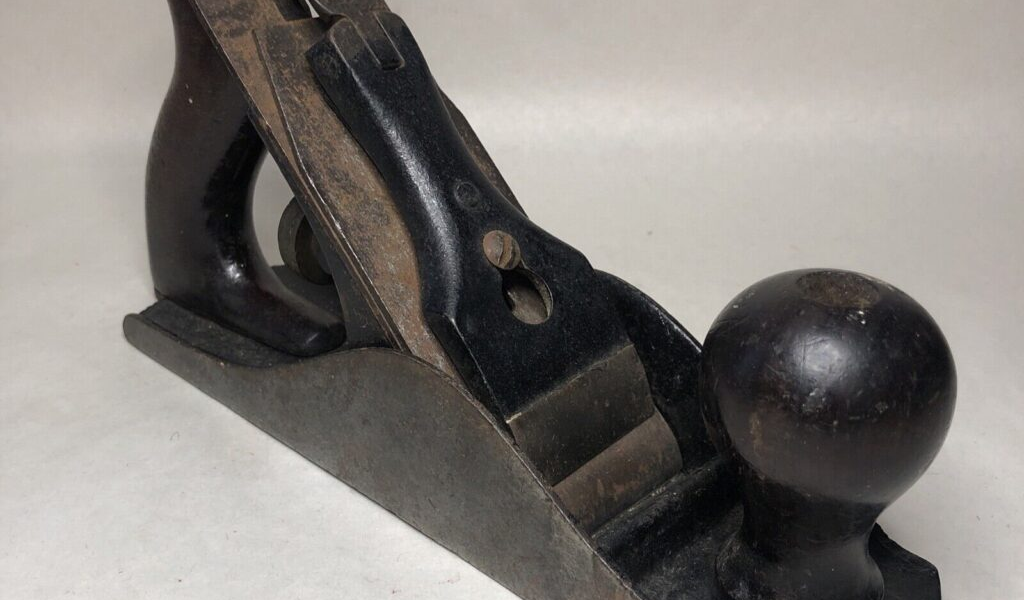In the world of woodworking, few tools have earned the respect and admiration of craftsmen like the Stanley Smooth Wood Plane. This iconic hand tool has stood the test of time, serving as a trusted companion for woodworkers for well over a century. Whether you’re a seasoned professional or an enthusiastic hobbyist, the Stanley Smooth Wood Plane is synonymous with quality, precision, and enduring craftsmanship.
In this article, we’ll explore the fascinating story behind the Stanley Smooth Wood Plane, from its historical roots to its modern-day influence on woodworking. We’ll uncover its innovative designs, versatility, and why it remains a beloved symbol of craftsmanship.
The Historical Origins of the Wood Plane

Wood planes have been shaping wood since ancient times, with early versions found in Roman archaeological sites. These early tools, made of wood and iron, were primitive yet effective, allowing artisans to shape and smooth wood in ways that were previously unimaginable. Over the centuries, the wood plane evolved, gaining more sophistication and becoming an indispensable tool in every woodworker’s toolkit.
By the 19th century, woodworking tools had advanced significantly, setting the stage for a new era of innovation in hand tools.
The Birth of the Stanley Rule and Level Company
The story of the Stanley Smooth Wood Plane begins with the establishment of the Stanley Rule and Level Company in 1857. Founded by Frederick T. Stanley in New Britain, Connecticut, the company initially produced hardware but soon shifted its focus to woodworking tools as demand grew.
The pivotal moment came in 1869 when Stanley acquired the patents for metal-bodied planes from Leonard Bailey, a move that would change the trajectory of the woodworking industry forever.
Stanley’s Innovative Designs: The Bailey Line
Leonard Bailey’s designs brought a revolution to woodworking, offering superior adjustability and durability compared to traditional wooden planes. Stanley adopted and improved Bailey’s designs, leading to the development of their renowned Bailey line of planes. These planes became the gold standard for woodworking tools, known for their precision and high performance.
One of the most famous planes in this lineup is the Stanley No. 4 Smooth Plane. It quickly gained popularity due to its versatility and exceptional ability to create smooth, flawless wood surfaces. The Bailey line, particularly the No. 4, cemented Stanley’s reputation as a leader in hand tools, and these planes remain some of the most sought-after tools in the woodworking world.
Understanding the Functionality of the Stanley Smooth Wood Plane

The Stanley Smooth Wood Plane is designed to smooth and flatten the surface of wood with incredible precision. The adjustable iron (blade) is set at a slight angle, which allows it to remove thin shavings of wood with each pass, leaving behind a smooth, even surface. This tool is especially essential in tasks such as finishing, where achieving a refined, smooth surface is critical.
The components of the plane are ingeniously designed to work together for maximum efficiency. These include:
- The body that provides the plane’s structure
- The iron (or blade) that does the cutting
- The frog that adjusts the angle of the blade
- The cap iron and lever cap that hold the blade in place
- The tote (rear handle) and knob (front handle) that provide control
Mastering this tool involves learning how to adjust its components properly to achieve the perfect cut, making it an art in itself.
The Versatility of the Stanley Smooth Wood Plane in Modern Woodworking

One of the reasons for the enduring appeal of the Stanley Smooth Wood Plane is its versatility. It’s not just limited to smoothing; it can be used for jointing edges, trimming, and shaping wood. Whether you’re working with rough lumber or adding the final touches to a delicate piece of furniture, the Stanley Smooth Wood Plane excels at producing a flawless finish.
Its versatility means that it remains a go-to tool for woodworkers, even in an age dominated by power tools. The tactile control it offers allows artisans to achieve a level of precision that’s hard to replicate with machinery.
The Enduring Legacy of the Stanley Smooth Wood Plane
Despite the rise of modern power tools, the Stanley Smooth Wood Plane continues to hold a special place in the hearts of woodworkers. Its design is a testament to timeless craftsmanship, embodying the principles of precision, quality, and durability. The plane’s legacy has endured not just because it works well, but because it connects woodworkers to the history and artistry of their craft.
Today, many woodworkers continue to use the Stanley No. 4 Smooth Plane, recognizing that while technology may change, the fundamentals of craftsmanship remain the same. The tool’s ability to produce smooth, beautiful surfaces with a level of finesse that machines can’t always match has kept it relevant in workshops around the world.
Influence on Modern Woodworking Tools

Stanley’s innovations in hand tool design have left a lasting mark on the woodworking industry. Modern tools still draw inspiration from Stanley’s original planes, incorporating advanced materials while retaining the core design principles that made these planes revolutionary. For instance, many contemporary wood planes mimic the adjustability and ergonomics of Stanley’s original designs, further cementing their influence on the craft.
Collectibility and Antique Value of the Stanley Smooth Wood Plane
Beyond its practical applications, the Stanley Smooth Wood Plane has also become a prized collectible. Vintage planes from the early years of the company are highly sought after by collectors and enthusiasts, with well-preserved models fetching high prices in auctions and antique markets. These planes are valued not only for their historical significance but also for the exceptional craftsmanship that went into their making.
For collectors, owning a Stanley Smooth Wood Plane is like owning a piece of woodworking history—a symbol of the art and science that have shaped the craft over the centuries.
Conclusion: A Timeless Symbol of Craftsmanship
The Stanley Smooth Wood Plane is more than just a tool; it’s a symbol of ingenuity, innovation, and dedication to craftsmanship. From its early days to its iconic status in modern workshops, this tool has been at the heart of woodworking. Whether you’re a master craftsman or just beginning your woodworking journey, the Stanley Smooth Wood Plane represents a timeless connection to the art of shaping wood with precision, care, and skill.
Its continued use and admiration remind us that sometimes, the best tools are the ones that stand the test of time—where simplicity meets excellence, and tradition meets innovation.



